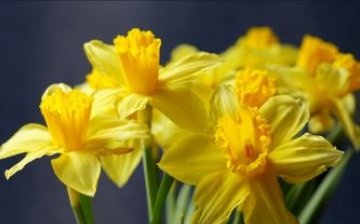How to properly reproduce daffodils
It is known that the daffodil can be propagated by both a bulb and a baby. For growing this plant, medium or light loamy soils are more suitable, which have a large arable layer, good drainage, and groundwater has a depth of no more than 60 cm.
The soil must be neutral, contain a lot of organic matter, and also be cultivated.
If the soil is clay or sandy, then it is improved due to the large amount of humus. Litter peat is often used for such purposes.
A year before planting, fresh manure is introduced, and immediately before it, rotted manure. Compared to other bulbs, daffodils are less sensitive. Generally, cut and bulb yields are much higher in open areas. Because it is here that they are least susceptible to viral diseases.
In production conditions, the reproduction of daffodils is usually carried out in the so-called crop rotation. And such plants are returned to their original place after about 5 years. Perennial and annual plants, grasses for lawns, etc. are introduced into crop rotations. The field or plot in the supposed year of planting of daffodils is under black fallow.
In the Middle Urals, daffodils are planted starting from the second half of August and including the first mid-September. It is important that even before the onset of the first long cold weather, the bulbs are well rooted.
Children of the 1st category (2-2.3 cm) and the 2nd (less than 2.0 cm) are traditionally covered by 10 cm. Naturally, on rather heavy soils, the depth decreases significantly. The distance between the daffodil's clues should be 15, 10-12 cm for parsing, and for children, respectively, 8-10 cm. You need to know that the reproduction of daffodils requires a lot of water consumption. Therefore, immediately after planting, especially in dry weather, they are thoroughly watered.



